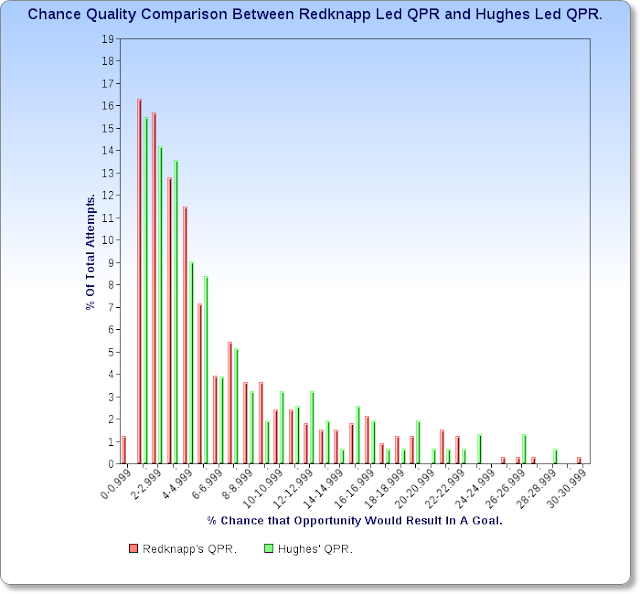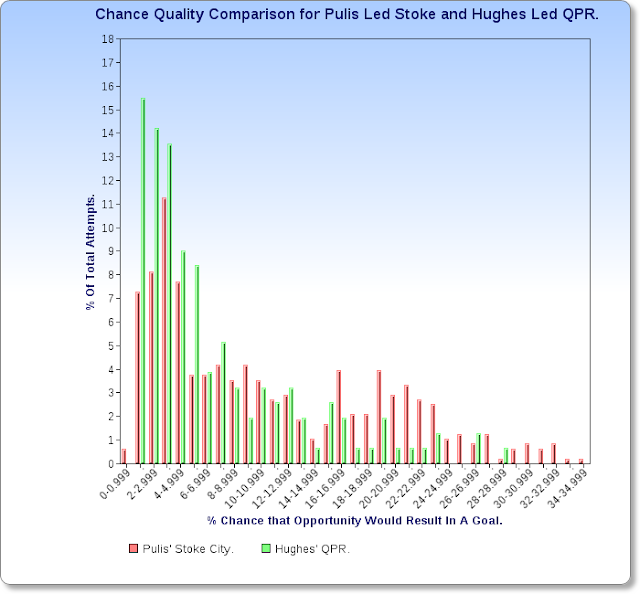Reduced to ten men after half an hour, when Delap saw red for first fouling Wright-Philips in full gaze of Martin Atkinson and then smacking the ball at the prostrate City player for good measure, Stoke scored the game's only goal just before the crowd adjourned for halftime pies. Manchester City's inability defend a high ball to the edge of the six yard box was all the encouragement James Beattie required and a raucous crowd, that spawned a myth, saw Stoke home for their first win in 11 long matches.
Judged from the sofa and from testimony from those I know who were there, the more opulent, current version of Manchester City, suffered a similar aerial mugging in a loud and proud stadium in Cardiff on Sunday afternoon.
Provocatively dressed in red, both for the City fans and also for a sizeable minority of their own supporters, the Bluebirds lifted themselves from an even bigger hole than the one faced by Stoke four and a half years ago. Dzeko's 52nd minute opener was cancelled out by Gunnarsson and then well and truly eclipsed by two headed Campbell goals from corners. Negredo's injury time consolation merely held back any early leavers intent on beating the traffic.
Cardiff's classic rearguard action, where territory was ceded, but bodies flooded the defensive third and pressure was relived towards the isolated attacking pace of Bellamy, was a familiar sight for Stoke fans used to Tony Pulis' preferred method of play. But having fallen behind, Cardiff had to go to another Potteries staple, namely the set piece.
Paradoxically, corners should be relatively easy to defend, but if a side can engineer or are allowed a free header from close range, the quality of the opportunity is often excellent.
Cardiff's Attempts on the Manchester City Goal.
Manchester City's Attempts on the Cardiff Goal.
City's possession dominance also gave them a 16-9 shot advantage, but what Cardiff lacked in quantity, they made up for in quality. Nearly half of their opportunities came inside the six yard box, compared to just one, off target injury time effort from Negredo for the visitors.
However, if we sum the goal likelihoods for each side's created chances, City edge back ahead with a expected goal supremacy that is nearly half a goal in front of Cardiff's. The expected situation becomes even less favourable for the hosts if we look closer at each shot.
Gunnarsson's equalising goal came about immediately following Campbell's saved effort from similar close range. It is to Cardiff's credit that they had players ready to react quicker than City's defenders, so they should potentially benefit from creating two such high quality chances inside the six yard box. But, although the caveat that an altered, preceding shooting outcome would inevitably alter the course of the game for any subsequent shot applies to any simulation, it is most keenly apt in the case of follow up efforts.
In short, Cardiff are entitled to score once from either Gunnarsson or Campbell's near simultaneous efforts, but not twice. Therefore, in any simulation, I've allowed that if Campbell scores with the initial shot, Gunnarsson can not repeat the feat a second later.
Simulated Match Outcomes Based on Quality and Quantity of Shots.
| Team. | % of Sims Won. | % of Sims Lost. | % of Sims Drawn. |
| Cardiff City. | 26.5 | 45.5 | 28 |
| Manchester City. | 45.5 | 26.5 | 28 |
Manchester City had a torrid time defending corners. Their poor play began simply by allowing Cardiff an opportunity, especially from such close range. But they also failed to exert any kind of defensive pressure on Campbell when he did evade his markers twice in ten minutes. Once those failures had kicked in, Campbell's likelihood of scoring probably eclipsed the generic, average conversion rates for headers inside the six yard box.
Nevertheless, on a straight reading of the chances created, Cardiff were still lucky winners on the day, despite their excellent, but likely unsustainable accuracy and conversion rates. They probably created enough late game chances to average a one goal return, but managed three and just a third of their shots probably should have required a save, rather that the two thirds in reality.
Manchester City would have won nearly half of the outcomes had they been decided by a repetitive shooting contest and in the reality of the day they failed to take advantage from actually taking a lead on Sunday from one of their least likely opportunities.
A Cardiff win was the minority outcome from a shot based simulation, but Cardiff will take heart from a performance that overall belied the expected pregame supremacy that most experts granted to their opponents. Manchester City had an estimated 67% chance of winning prior to the Cardiff City Stadium kicking off their home Premiership adventure.
Manchester City will wonder if defeat was merely down to a bedding in period for a change from zonal to man for man corner marking and will take scant comfort from a likely virtual victory in light of a real life, points costing, defeat.
.PNG)
.PNG)
.PNG)
.PNG)










